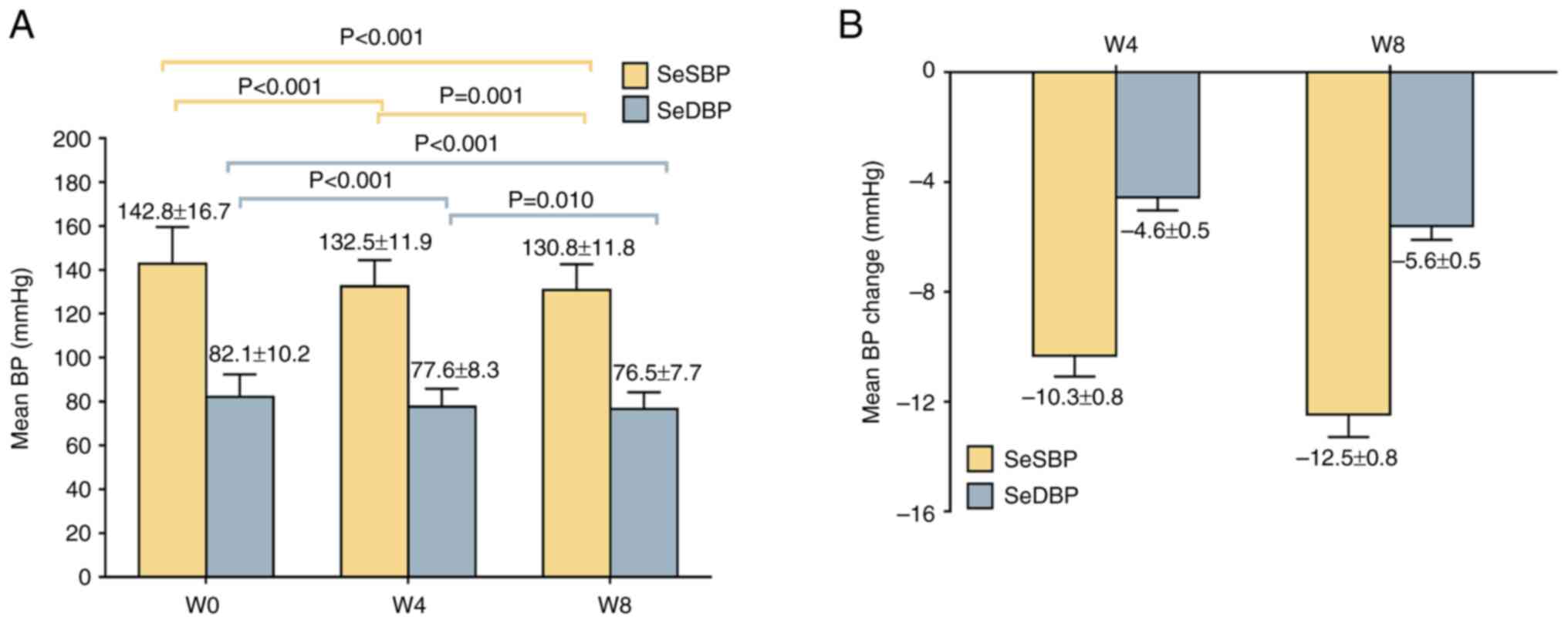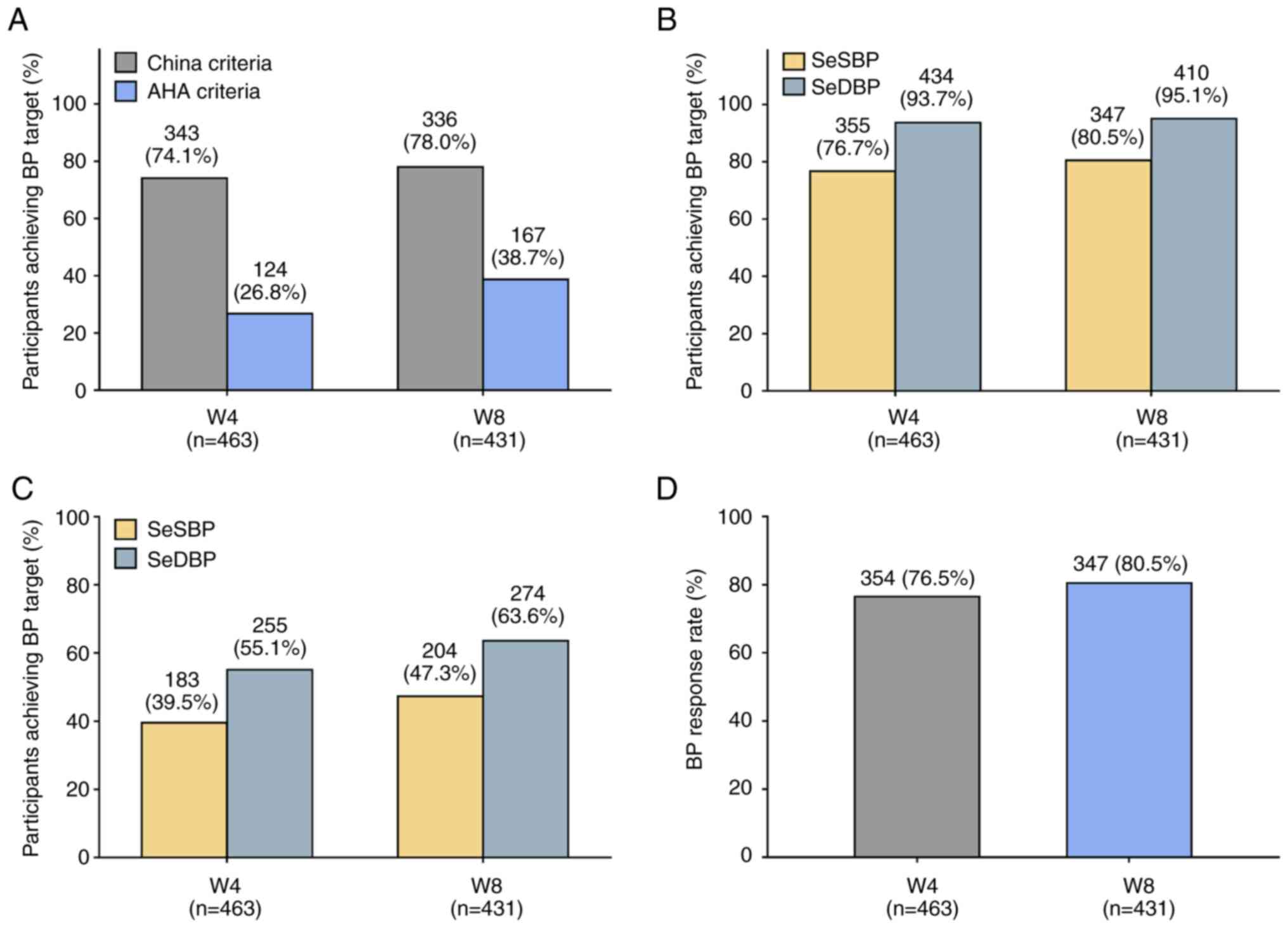Efficacy and safety of olmesartan medoxomil‑amlodipine besylate tablets (Sevikar®) in older patients with essential hypertension: Subgroup analysis from the Sevikar study
- Authors:
- Published online on: December 5, 2023 https://doi.org/10.3892/etm.2023.12338
- Article Number: 51
-
Copyright: © Cui et al. This is an open access article distributed under the terms of Creative Commons Attribution License.
Metrics:
Total
Views: 0 (Spandidos Publications: | PMC Statistics:
)
Total PDF Downloads: 0 (Spandidos Publications: | PMC Statistics:
)
Abstract
Essential hypertension is a notable threat for the older (age, ≥65 years) population. However, to the best of our knowledge, a real‑world study assessing olmesartan medoxomil‑amlodipine besylate (OM‑AML) tablets in older Chinese patients with essential hypertension has not been performed. Therefore, the present study aimed to evaluate the efficacy and safety of OM‑AML tablets in these patients. A total of 463 older Chinese patients with essential hypertension treated with OM‑AML (20/5 mg) tablets (Sevikar®) were analyzed in a prospective, single‑arm, multi‑center, real‑world study. Seated systolic blood pressure (SeSBP) and seated diastolic blood pressure (SeDBP) at baseline, and at week (W)4 and W8 after OM‑AML tablet administration were measured. The mean ± standard error change of SeSBP/SeDBP was ‑10.3±0.8/‑4.6±0.5 and ‑12.5±0.8/‑5.6±0.5 mmHg at W4 and W8, respectively. At W4, 74.1 and 26.8% of patients achieved BP target according to the China and American Heart Association (AHA) criteria, while at W8, 78.0 and 38.7% of patients reached these BP targets accordingly. Finally, 76.5 and 80.5% of patients achieved BP response at W4 and W8, respectively. Furthermore, home‑measured SeSBP and SeDBP were significantly decreased from W1 to W8 (both P<0.001). Additionally, the satisfaction of both patients and physicians was elevated at W8 compared with at W0 (both P<0.001). The medication possession rate from baseline to W4 and W8 was 95.5 and 92.5%. The most common drug‑associated adverse events by system organ classes were nervous system disorder (4.5%), vascular disorder (2.8%), and general disorder and administration site conditions (2.6%), which were generally mild. In conclusion, OM‑AML tablets may be considered effective and safe in lowering BP, enabling the achievement of guideline‑recommended BP targets in older Chinese patients with essential hypertension.













